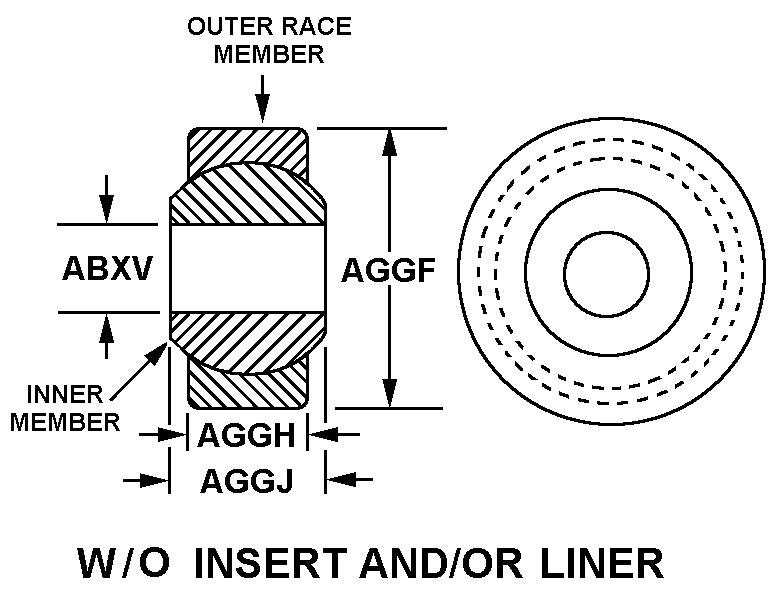3120013476433
Price Quote Get an up to date pricing and availability quote for this product. Order online or over the phone.
Quality Commitment
Serving our customers with quality and safety first.
- AS9120 Certified
- Audited supply chain
- ITAR Registered
- DDTC Registered
- HAZMAT Certified
- Customer service objectives
- Every product 100% inspected

3120-01-347-6433 Specification Set by the OEM (see RNCC code 3)
0.9995in. and 1.0000in.
1.7495in. and 1.7500in.
0.6550in. and 0.6650in.
0.7950in. and 0.8000in.
22000 pounds
surface roughness is 32 microinches all over
nickel alloy 718 inner membersteel comp 630 outer race member
ams 5662 assn std single material response inner memberams 5604 assn std single material response outer race member
without insert or liner
Cross Reference Parts Part numbers that meet the specification outlined on this page and set by the OEM
Identification Item Identification Guide (IIG) and Item Name Code (INC)


Definition Definition of approved item name (AIN): "BEARING,PLAIN,SELF-ALIGNING"
A detachable assembly in or on which a journal, gudgeon, pivot, or the like moves. It is used to carry a load and to reduce sliding friction. It does not employ rolling elements. The item consists of a bored precision ground ball (or spherical plain bearing) around which an outer ring is fitted. The assembly may be either separable or nonseparable. Excludes bearing, plain, rod end and bearing, plain, spherical.
3120-01-347-6433 Material Hazmat, Precious Metals, Criticality, Enviroment, and ESD
Indicates there is no data in the hmirs and the nsn is in a fsc not generally suspected of containing hazardous materials.
Item does not contain precious metal.
Represents items with no adp components
The item does not have a nuclear hardened feature or any other critical feature such as tolerance, fit restriction or application.
Identification Codes
HMIC: Hazardous Material Indicator Code. A one position code that identifies a hazardous item.
PMIC: Precious Metal Indicator Code. A one position code which identifies items that have precious metals as part of their content. precious metals are those metals generally considered to be uncommon, highly valuable, and relatively superior in certain properties such as resistance to corrosion and electrical conductivity.
ESD: Electrostatic Discharge. Indicates if an item is susceptible to electrostatic discharge or electromagnetic interference damage. electrostatic discharge damage occurs when an accumulation of static electricity generated by the relative motion or separation of materials is released to another item by direct contact. electromagnetic interference damage occurs when an item comes into proximity with an electrostatic or magnetic field.
ENAC: Enviromental Attribute Code. Identifies items with environmentally preferred characteristics.
CRITL: Criticality Indicator Code. Indicates an item is technically critical by tolerance, fit, application, nuclear hardness properties, or other characteristics.






